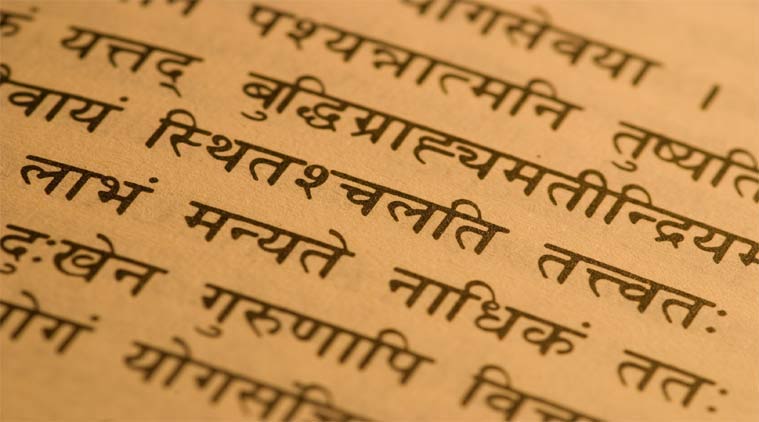Keeping the language alive: The Karnataka village where people still speak in Sanskrit
In this small village, cloistered in the district of Shimoga, on the banks of river Tunga, exists a world that is united by elements of both Vedic times and modern science.

In Mattur village of Shimoga district, most of the residents speak in Sanskrit. (Source: File Photo)
People conversing in phrases like Aham gachchami (I am going), Katham asti (How are you?) is not an uncommon sight in Mattur. This Karnataka village is famous for quite a few things – most of the residents in this little hamlet right from children to shopkeepers and street vendors speak in the classical language of Sanskrit, and almost every family produces atleast one IT professional.
In this small village, cloistered in the district of Shimoga, on the banks of river Tunga, exists a world that is united by elements of both Vedic times and modern science. Six hundred years ago, the Sankethis, a community of Brahmins, migrated from Kerala to Mattur and have been living there ever since. Apart from Sanskrit, the Sankhetis also speak a rare dialect named after the community called Sankethi, which is a mixture of Sanskrit, Tamil, Kannada, and parts of Telugu. The Sankethi dialect has no written script and is read in the Devanagari script.
The village has an efficient system of education and also makes a meticulous effort to preserve its culture. With at least one IT professional in every house, many people work abroad. Even then, to keep their tradition alive, they make it a point to attend rituals and festivals back home atleast once a year
To educate its children, Mattur has a pathshala that focuses on Vedic texts and science. The village elders, here, actively participate in the education system. The schools in Mattur boasts of some of the best academic records in the district. Some people attritube this to Sanskrit. According to them, learning the language helps the students develop an aptitude for mathematics and logic. With computer languages like FORTRAN drawing heavily from Sanskrit, it very well may be true.
The students at the pathshala collect old Sanskrit palm leaves, try to expand the script on computers and rewrite the damaged text in present day Sanskrit to make it available to the common man. A lot of students from abroad enroll themselves at the pathshala to learn the language.
Mattur is also popular for its Sanskrit graffiti. Quotes that send out messages like “Maarge swachchataya virajate, grame sujanaha virajante” (Cleanliness is as important for a road as good people are for the village) are found in plenty across the street and on the walls of the houses.
In a country where less than a percentage of its population speaks in Sanskrit, Mattur’s efforts in not only keeping the language alive but also teaching it to others, is admirable. On the eve of World Sanskrit Day, we hope Mattur inspires more and more people to preserve this ancient tongue.






















No hay comentarios:
Publicar un comentario